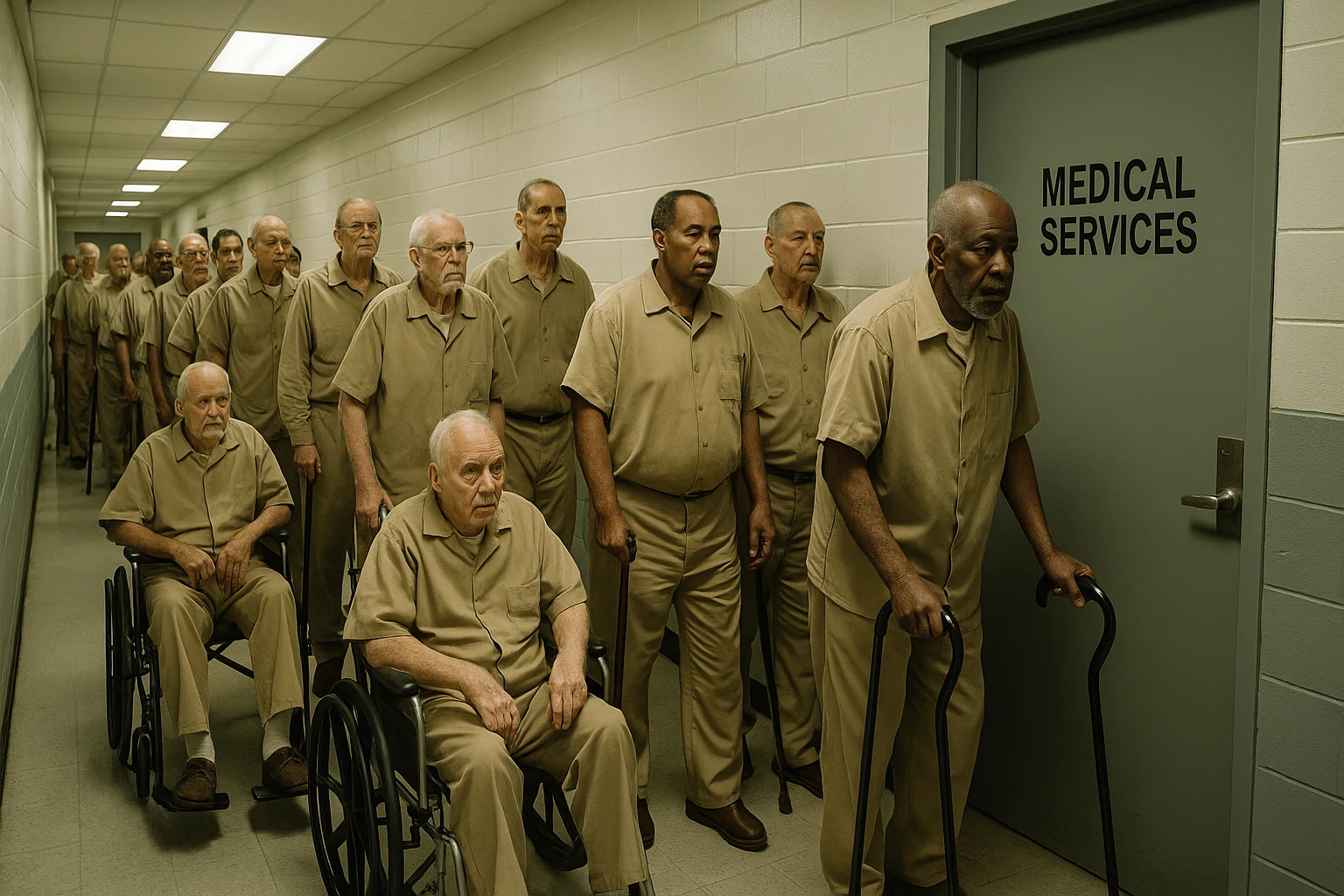According to official Federal Bureau of Prisons (BOP) policy, incarcerated individuals are entitled to the same standard of medical care available in the surrounding community. On paper, this sounds equitable. In practice, however, BOP inmates have reported that access to that care is obstructed by chronic understaffing, poor resource allocation, and a system where medical professionals are frequently reassigned to non-medical roles, such as security and custody duties.
The issue is not simply a lack of medical infrastructure—facilities often exist and doctors are on staff—but a matter of ineffective management and restricted access. This systemic dysfunction results in preventable suffering, untreated illnesses, and ultimately, premature death.
The Gauntlet of "Sick Call"
To seek medical attention, inmates must wake at 5:30 a.m., skip breakfast, and report to what is known as "Sick Call." This process involves completing paperwork and waiting, often for hours, in a crowded holding area. They may or may not see a Physician Assistant (PA) that day. These PAs serve as gatekeepers to the limited number of doctors—typically just one or two per 1,600 inmates.
If the PA determines a doctor's visit is warranted, the inmate is placed on a waitlist. While initial appointments are often scheduled within two weeks, actual follow-up care can be delayed for a month or more due to lockdowns, weather interruptions, staff appreciation days, or other security-related events. These administrative bottlenecks frequently discourage inmates from seeking care at all, leading many to suffer in silence.
When Minor Symptoms Hide Major Threats
This delay in diagnosis and treatment can have devastating consequences. Inmates have reported cases where seemingly minor symptoms masked serious, treatable conditions such as:
- Chest pain that turned out to be untreated cardiovascular disease
- Persistent coughs that were later diagnosed as advanced lung cancer or tuberculosis
- Fatigue and weight loss that signaled diabetes or late-stage liver disease
These are not rare occurrences. In fact, the most common causes of death among federal inmates include heart disease, cancer, and complications from infectious diseases—all of which are manageable or even curable with timely care. Chronic illnesses like diabetes and respiratory conditions also contribute significantly to inmate mortality, especially when medication is inconsistent or unavailable.
Life Expectancy: A Data-Backed Indictment
The numbers tell a sobering story. Research indicates that each year spent in prison shortens an individual’s life expectancy by up to two years. In New Jersey, a 2024 report revealed that the average age of death for incarcerated men was just 59—over 15 years younger than the general U.S. male population.
Despite the Department of Justice’s reluctance to acknowledge this reality, the implication is clear: lengthy prison sentences, particularly for non-violent or aging offenders, function as de facto death sentences. The cost of this neglect is not only human—it’s fiscal. End-of-life care for inmates can cost taxpayers millions annually, surpassing the expenses of alternative sentencing or medical parole.
Older Inmates, Lower Risk
Compounding the issue is the fact that recidivism rates among inmates over the age of 55 are strikingly low. Studies consistently show that older individuals pose a minimal risk to public safety. This raises a critical question: why are we incarcerating people well past their prime earning or offending years, particularly when doing so is both inhumane and economically inefficient?
Prevention Is Cheaper Than Neglect
BOP inmates have repeatedly emphasized the potential benefits of systemic reforms: access to healthy food in the commissary and food services, reinstating fitness equipment, and improving mental health resources. These preventive measures could reduce medical emergencies and extend life expectancy at a fraction of the cost of reactive, late-stage care.
Currently, the BOP operates less like a correctional system and more like an underfunded hospice. But the lives being prematurely ended are not merely statistics—they are fathers, mothers, veterans, and citizens, many of whom are serving time for non-violent offenses.
Solutions: A Path Forward
- Mandate healthcare access reviews: Require independent audits of inmate healthcare systems across federal facilities.
- Expand compassionate release: Streamline eligibility for older, terminally ill, or incapacitated inmates.
- Improve medical staffing: Ensure medical professionals are not reassigned to non-medical roles.
- Restore health-focused infrastructure: Reintroduce fitness equipment and offer nutritious commissary options.
- Reform sentencing laws: Incorporate data on prison-related life expectancy loss into sentencing guidelines.
- Invest in preventive care: Provide consistent treatment for chronic conditions and mental health support.
Until systemic changes are made, the Bureau of Prisons will continue to operate as an expensive and ineffective end-of-life facility—failing those in its care, and the society it claims to serve.
